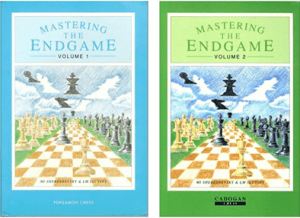
There are many pitfalls when it comes to learning an opening. Some exist on the repertoire level:
- Picking bad quality lines
- Not taking into account one’s style
- Not taking into account one’s resources
- Disregarding the economy-principle
- Disregarding the expertise-principle
- Disregarding the topic “winning potential” with Black
I addressed these traps already at several places in my blog and will add more material in due course. Another class of mistakes happens on the technical level. Let’s assume you did everything right on the repertoire level and chose a good quality opening that is in line with your chess personality. The next step would be to learn the most important moves and fully understand the logic of your lines. Here, the following behavior happens to be quite popular:
- Disregarding the principle of repetition
- Disregarding the principle of completeness
- Disregarding the principle information density
- Disregarding the principle of activity
Let’s take a look at these topics one by one:
1. Disregarding the principle of repetition
Many chess players complain about forgetting open theory, but only the minority puts enough effort into learning. According to linguists one has to see a vocable up to 50 times before having it completely internalized. Chess players, however, might browse through a book one or two times and wonder why they cannot keep the moves in their head.
As I mention in a text about the shortcomings of books, playing through lines with a board and a book takes ages. This is were digital files come in handy, as you can browse through games in light speed, if you so please. Repeating your lines often enough doesn’t have to be an issue anymore.
2. Disregarding the principle of completeness
Studying an opening properly includes learning how pieces and pawns behave in the middlegame. But it hasn’t to stop there. In variations where the structure remains intact until the endgame, one can speak about opening-specific endings. Every ambitious tournament player who deals with the French Defence (with either side), to give but one example, knows about the importance to study typical french endgames. At the beginning of 90’s I read both of Shereshevsky’s books on that topic. The first volume covers open- and semi-open games, the second deals with closed openings.

Many opening books, however, only cover the pure opening phase or the early middlegame at best. As a consequence, players are often at a loss, when leaving theory after move 15 or so and are prone to committing severe mistakes. Book authors are confined by the available space and are not really to blame. Opening books are just no perfect tools. The advantage of digital files is their unlimited space. Authors are free to present typical late middlegames or even relevant strategic endings.
3. Disregarding the principle of information density
Learning a line by heart in a monotone and lifeless manner doesn’t make a lot of sense, as nothing is more difficult to memorize than incoherent facts. Unless you are very young or have a photographic memory, your only chance to remember significant amounts of theory is to give meaning to the moves you want to remember. As much meaning as possible. They have to be embedded into the logic of the position. They have to be linked to the structure, to typical goals, manoeuvres, tactical motifs etc. The more connected a specific move is, the better it will be remembered.
Obviously, memorizing moves more efficiently is not the only reason for trying to understand the underlying strategic concepts of a variation. More than anything, this is an aim in itself. Once you understand the laws which govern a position, you made yourself independent of concrete moves to a large degree. You will then be able to logically deduct decent moves when being out of book.
4. Disregarding the principle of activity
There is a huge difference between passive learning and active learning. Passive learning occurs in a low energy-environment, where new information is only loosely attached to the existing structure. Aesthetic aspects might play a role and sometimes the boundaries towards entertainment or consumption are fluent. Active learning requires a curious and maybe even skeptic approach. The active learner doesn’t take things for granted and is only satisfied if everything is fully understood. How would this mentality translate to the process of learning chess openings?
Obviously, an active learner needs a flexible store of knowledge. Unfortunately, a book isn’t such a thing. You can use a text marker, scribble down some notes and even insert some papers, but that’s about it. If you want to learn openings in serious fashion, you need to do it on your computer. That doesn’t make opening books obsolete. You just have to transform the relevant information to your files.
